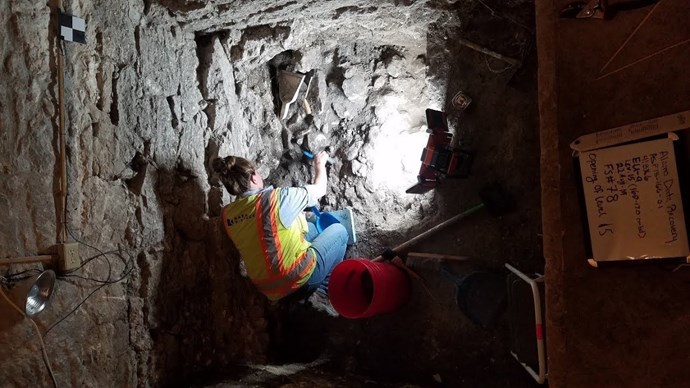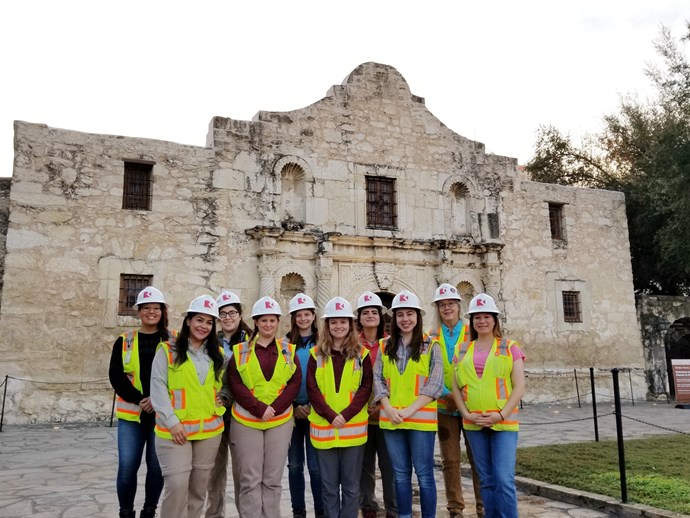Fort Alamo: Raba Kistner preserves a historic American landmark
The Alamo stands as a shrine to Texas liberty. Located in San Antonio, Texas, the Alamo has a diverse 300-year history and is the most visited destination in Texas, with over 1.6 million visitors each year. The iconic landmark is a designated United States National Historic Landmark and part of the only UNESCO World Heritage Site in Texas. Raba Kistner is proud to be a part of the preservation of this American treasure.
Established in 1718 as Mission San Antonio de Valero, the former Spanish mission has been a crossroads of history. It has existed under five flags of independent nations and served as a garrison for five different armies but is best known as the site of the 1836 Battle of the Alamo.
The Battle of the Alamo was a pivotal event in the Texas Revolution, a rebellion of colonists from the United States and Tejanos (Hispanic Texans) in putting up armed resistance to the government of Mexico. Following a 13-day siege, the Texians were ultimately defeated and most of them killed. The battle became a symbol of heroic resistance and sacrifice for the Texian cause, inspiring others to join the fight for independence and leading to victory in the war and the establishment of the independent Republic of Texas.
Today the Alamo remains a symbol of Texan identity and pride. The Alamo Trust is working to preserve the Alamo and bring its unique story to life. Part of their vision is to create a world-class visitor center/museum and heritage site complex. Raba Kistner’s Cultural Resources team has been working on site at the Alamo since 2019. Here’s a glimpse at the team’s work:

Photo: Rhiana Ward, Assistant Director, Cultural Resources for Raba Kistner assists in the archaeological investigation at the Alamo.
Following two years of planning, Raba Kistner archaeologists began project fieldwork on July 17, 2019. The objective of the project was to assess the condition of the Church and the Long Barrack, the oldest buildings on the Alamo historic site and where many Texian rebels made their last stand in the battle. The Church and the Long Barrack were in a poor state of preservation. The first phase of the master development plan was to provide detailed structural information on all parts of the buildings, from the roof to the base of the foundation for the architectural historians, preservationists, and the rest of the design team.
It was our goal to excavate large units to provide preservationists with a full view of each wall. Two meter by two meter units were excavated from the current grade to the base of the foundation for each building. From there, preservationists could install sensors and monitors, take photographs and scans, take coring and soil samples, and other types of sampling to provide the data to determine the structural weaknesses of the walls.
At the very beginning of the project, each unit required two archeologists for excavation and screening of the materials being removed. Additional archaeologists assisted with screening and documenting artifacts. At one point, 18 to 20 archeologists were on-site at the Alamo working on 18 excavation units.

Photo: members of the Raba Kistner Archaeology team at the Alamo
In addition to the structural integrity of the church and long barracks, our team conducted a historic resources survey which provided a chronology of the use of the buildings, based on archival research.
The team encountered several thousand artifacts dating from the Mission Period in the early 1700s through the early 1900s. Interesting fragments included pieces of sword and a fork made in Spain, pottery made in Mexico south of the Rio Grande or made in Spain and brought to the new world. Finding ceramics is really incredible because they to define a time period for a specific deposit based on knowledge of manufacturing and trading activity. These artifacts not only provide support for the time period of the specific deposit, but also show how people in the region and time period were interacting with the world around them.
The Alamo is in the center of town and is highly visible. During our investigation, a chain link fence separated our team’s work from the general public. Because we worked in close proximity to people in certain sections of the investigation, they were able to watch us and ask questions. We made it a point to answer questions from people of all ages while we were working. They were interested in the history and archaeology of the Alamo, asking whether we found any signs of the Battle, what kind of artifacts were found and the age of the artifacts. This type of interaction provided a great opportunity for us to share our enthusiasm and focus on the importance of preservation and conservation at historic sites.
The Alamo Archaeology exhibit is now open inside the historic Long Barrack. You can visit the Alamo virtually at https://www.thealamo.org/visit


